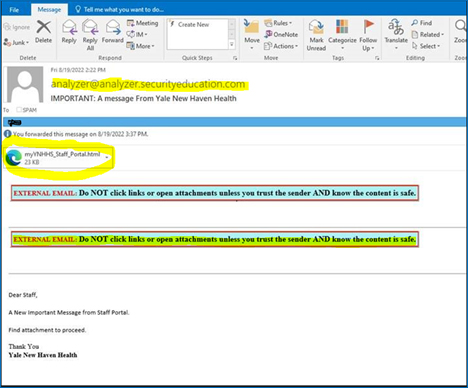
Popular Locations
- Yale New Haven Children's Hospital
- Yale New Haven Hospital - York Street Campus
- Yale New Haven Hospital - Saint Raphael Campus

With cyberattacks increasing, employees urged to be extra vigilant
Like other healthcare organizations, Yale New Haven Health has seen a significant uptick in cyberattack threats recently.
The health system’s Information Technology Services continues to operate in an elevated state of readiness, using a wide variety of tools and techniques to protect our network and ensure we can continue caring for patients.
But ITS can’t do it alone. YNHHS has nearly 30,000 employees. That’s 30,000 opportunities for cyber criminals to access the health system’s computer network to steal information or hijack the network and demand ransom to release it. That can seriously disrupt – even halt – patient care.
One of these criminals’ favorite and most effective tools for accessing computer networks are emails with links or attachments in them. Once an employee clicks a link or opens an attachment, it releases malware (malicious software) that invades our network.
“Employees should be particularly alert for these ‘phishing attacks,’” said Glynn Stanton, YNHHS chief information security officer. “The criminals have gotten better and better at making these emails look legitimate, which is why we’re constantly reminding people to STOP, think, don’t click the link, and don’t click attachments from senders they don’t know and trust. It only takes one email user to let the bad guys in through the electronic front door by clicking on a malicious email.”

What are some signs of a potentially dangerous email? The example includes some important clues: